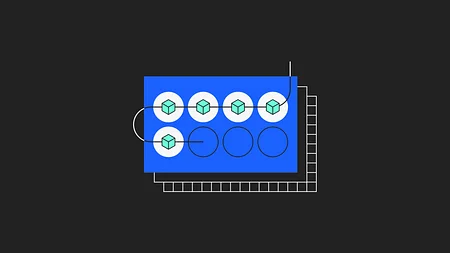Stefan Thomas, on Ripple, Interledgers & XRP
Simon Taylor interviews Stefan Thomas, CTO of Ripple for Episode 1 of Blockchain Insider, explaining the relationship between Ripple, Interledgers and XRP.
I am here at Money20/20 Europe with the CTO of Ripple, Stefan. Stefan, how would you describe what Ripple is today?
I think today we’re a software company that’s making solutions for banks, to make cross-border payments easier, faster, cheaper.
You’re a solution for banks, and they’re finding cross-border payments too expensive. Is that all banks? Who’s the ideal customer?
Banks are finding it harder and harder to serve their customers. This could be corporates that are trying to do disbursements around the world, trying to pay out to vendors, etc., and they’re trying to provide a better product, because their customers are slowly moving away to alternative solutions, and so for the banks to keep their customers around, they need a better infrastructure, so they can actually give the same kind of user experience that you would get from some of their competitors.
When you talk about better infrastructure, you’re not talking about changing what’s inside the banks, you’re talking about the connections between them, right?
Yes, exactly, the way that banks connect to each other, especially.
How do they do that with Ripple, versus how they used to do it?
So, today, they’ll usually have messaging systems that are kind of one-way, so they’ll shoot a message off, and then not get any feedback, not get any reply right away and with Ripple, what we can do is we can actually see the entire cost across a payment pass. If it goes through a bank, to another bank, maybe even to another bank, we can see the cost across that path, and then also, how long it’s going to take. Basically, all the properties of the payment we can see up front.
Is the metaphor here that, I send an email to Bank Number 2, and Bank Number 2 then forwards that email to Bank Number 3, who forwards that email to Bank Number 4, but doesn’t include me, and I have no idea what’s happening to my payment? Whereas with Ripple, I’m cc’d in the whole thing?
Exactly, yes, a lot of payments actually fail because of this. 10% of international wires fail because some part of the destination information is wrong, the account number, maybe, or the address, or the bank name, or whatever the case may be. We’re addressing that by being able to verify that information right away. This is just another example of end to end communication being really key to providing a good user experience.
"End to end communication [is] really key to providing a good user experience."Is there anything you guys can do to make that legacy system go faster? Is there a benefit still, to using Ripple, even if the original system itself is slow? I think the visibility is still there. Before we move any money, we can still do that end to end communication, so we see what the costs are going to be, what the speed is going to be, even if the systems themselves are not real time. In fact, I would say, from what we hear from our customers, real time isn’t the biggest issue. I think the biggest issue is the failure rates, and the customer service issues that that causes. It’s the number of APIs you have to integrate with, if you want to do global payments. I think, a lot of banks are upgrading their internal systems, and then they find out that there’s no place to integrate that cross-border. You’ll see more and more countries, like the UK, having very good domestic real time systems, but then having trouble connecting with other countries in real time, so that’s where we see a lot of benefit. How do you balance transparency and privacy? If you’ve got this shared ledger, if everybody’s using this network, and everybody can see everybody else’s transactions, how do you guys manage privacy? The technology that we use today is a protocol called Interledger protocol, and in that protocol, the only parties that are actually privy to the details of a transaction are the banks, or the financial institutions that are involved in that transaction. So, it’s very different to other solutions that a lot of other vendors are out there with, where you do have a shared ledger that everyone one can see. So, with Ripple, it’s not even the consortium that can see it, but it’s actually just the particular participants of that transaction, plus any regulators.
"The technology that we use today is a protocol called Interledger protocol, and in that protocol, the only parties that are privy to the details of a transaction are the institutions that are involved in that transaction"So explain the interplay between Ripple and Interledger. What is the difference between the two? I would say that we’re using the shared ledger primarily for one thing, which is the built in currency, XRP, which is yet a third thing, so I can see how people might think it’s confusing, but the way I usually explain it is that I see it as stages. So I think the most immediate benefit that we can give to people is that transparency we were just talking about, right? So, that’s something that banks are benefitting from, doing payments today, and so that is the most near term opportunity. The benefit of using Ripple is the transparency. If my gateway in is something that only I and my counterparts can see, how are you balancing that with the transparency? Is it just the counter parties to the transaction themselves that can see the entire flow? That’s exactly it. Maybe transparency’s a misleading word. I think it always, depends on transparency of what, and for whom? For us, it’s the transparency to the user, in terms of what is the path, what does the liquidity look like. Not every player is comfortable with sharing their rates, and being transparent about their pricing, but I think that that’s just a requirement, that’s just something that customers are going to expect in the future, and so the players that are willing to share their rates, those are the ones that we let participate in our network, and we think that those are the ones that are going to be the most successful.
The players that are willing to share their rates, those are the ones that we let participate in our network, and we think that those are the ones that are going to be the most successfulAnd I suspect regulators would enjoy that, as well, from a "treating customers fairly" perspective. So, build up the story for me, then. We’ve got Interledger, we’ve got Ripple, and then the third step, we’ve got XRP. Let’s solve one problem at a time. Why do I need Interledger? I want the transparency. How do I get Interledger, how do I integrate it, and what do I do with it, once I’ve got it? What does it give me? Interledger is basically an interoperability protocol, for payments. We want to apply the ideas from the internet to payments. So, taking the same sort of architecture, the history of it, and thinking about whether those lessons can be applied to money. And I think there’s a lot of people talking about internet of blockchain, internet of value, internet of money, internet of payments. But I think that a lot of those approaches don’t actually really look at the architecture of the internet, and try to apply the principles of it. They’re just trying to get the outcome of it. So, would it be fair to say that the banking system, and payment systems, are sort of almost existing in a pre-internet age? Before the internet came along, we could all build networks, universities had networks, companies had networks, but getting those networks to talk to each other was always proprietary and hard, and that’s exactly where the banking system is today. I want to solve that problem, and I need a way for those systems to talk to each other, but I can’t just use the internet protocols, I need a different type of protocol, and that’s where I might want to use something like Interledger. Yes, I think the best example that I always can give is if you look at Visa, and you look at their slogan, do you know what it is? “Everywhere you want to be.” And if you look at MasterCard, it’s basically the same thing, where it’s, “For everything else, there’s MasterCard.” So, both cases, they’re basically advertising how large their network is, how many merchants can you go to, where can you spend with these cards, and so the primary value proposition is reach. It’s not how cheap are we, or how fast are we, or anything like that, it’s, “We can reach so many merchants.” If you go back far enough in time, you see ads from CompuServe and online service providers, where they also talk about, “We have the most members, we have the most services,” and it makes sense that, before you tie all the networks together, the biggest value proposition is always, how many people can you reach? But what happens is you get a couple of these incumbents that are very large, and they have that global reach, but then all the smaller providers band together, and they interoperate using some protocol, and that’s when you suddenly see them starting to threaten the incumbents. I think that hasn’t happened in payments yet, because it hasn’t been the right technology, and with Interledger, we’re trying to create a protocol that can do just that. What problem do I have once I’ve got Interledger? Once my payments are interoperable what do I then need to solve? We have 11 full-time people working just on Interledger; the reason we’re investing so much time is because we think it’s going to be a big driver for our products in the market, because this is going to put additional pressure on the system to modernise, and to keep up with the technological change. If people are starting to do these kind of payments that we envision for Interledger, where I can pay from any wallet to any wallet, I can pay, seamlessly in the flow, and I am no longer restricted by some of these expensive, slow networks that I have to go through today; once we reach that stage, banks are going to have to keep up with that, and so we are making solutions for banks that allows them to do that. It’s creating demand for our products. Yes. So, in one sense, you’ve solved the first problem, which is payments aren’t interoperable, so now you’re solving problem number two when you go, “Well, we’ve been working on a faster, better system, in theory, so here it is,”. I’m not sure why XRP is needed in the system. What is XRP? The way that you do real time international payments today is by pre-funding funds around the world. So I’m a bank who’s in one country, and you’re a bank in another country, and I decide I’m going to give you a whole bunch of money, and you’re going to give me a whole bunch of money, in different currencies. Is that what you mean by pre-funding? Exactly, but it’s not just banks that do that, it’s corporates that do that, it’s payment companies that do that, and there’s actually a lot of money that’s tied up just for that purpose. Some estimates I’ve seen are $26 trillion around the world; that’s a significant amount of money just to be sitting there as collateral for payments, or reserves for payments. Where we see a big opportunity is, if you had an asset that you could move globally, in real time, and it was reliable enough and stable enough to use as a solvent asset, it basically would become, like a form of gold, a form of reserve, that you can almost, teleport around the world. It would stop you from having to pre-fund everywhere, because you can actually move your collateral around the world wherever you need it, in real time, and so that allows you to free up those funds and use them for something else. Couldn't somebody else do that, with another asset? It doesn’t have to be XRP; XRP is just one that you guys chose and picked. Right, so that’s a really good point. We want to look at what are the properties of an asset that you’d want, if you want it to be used in that role. You could use dollars or any kind of digital asset, like bitcoins, Ripples. The question is, what are the properties that you’re going to be looking for? And so when I look at fiat currencies, until central banks actually offered a service, you’re always going to be tied to some particular counterparty, some particular issuer for that particular ledger that you’re using for the settlement, and I think the problem that banks have run into is they will charge you through the nose for that service, because they have that reach and other people don’t. It’s that same problem of, once you have reach you get that lack of competition, because people are just entrenched. I think there’s an opportunity for these neutral assets to be used for settlement where Ripple can’t charge any high fee for that, because we don’t control the network any more than any of our users do, and so the fees will always be low on Ripple, and so it becomes a freely usable system.
"The fees will always be low on Ripple, and so it becomes a freely usable system."It’s designed to create freedom in the system. But isn’t it true that the overwhelming majority of Ripple nodes are run by Ripple? Right now we are working with a bunch of partners around the world, including MIT, Microsoft, these are all enterprise hosting companies, and basically what they’re doing is they’re running Ripple validators. Now, the way Ripple works is that it’s the users that are choosing which validators they want to listen to. So, they can choose us, they can choose these other partners, etc. Right now, what we recommend to our partners is that they use our validators, and the reason for that is because we are the only ones with several years of operational experience, and other benefits that you might want, if you’re using the system commercially. However, in the future, some of these other providers will build up that experience, and they’ll build up that track record, and at that point, our customers will start trusting them, and also, we’ll start recommending that they trust them. So, that’s when the network becomes something that we truly don’t control. Interesting. Where do you see the market at, at the moment? There’s still a lot of confusion out there. Where are we at in the evolution? We’ve seen the crypto-asset bubble, recently. Where are we at, and what are people missing? I think that more and more people are understanding that the key challenge is interoperability. We were pretty early with Interledger, there’s lots of other approaches out there now, with Cosmos and others, and basically, what I would say is that, at some point in the near future there’s going to be some winner on the side of interoperability, and no matter which one that is, we’re going to definitely support that in our products. Ripple products are designed so that they can support any kind of interoperability protocol, and so for our customers, they don’t have to worry about which one of these many, many technologies is going to win out, because if they use Ripple’s stack, they’re going to be interoperable with it either way.
"Ripple products are designed so that they can support any kind of interoperability protocol"How do you guys see the transition coming, from where you’re recommending the majority of your customers use your service and validators, and you guys are controlling how XRP supply is being released. How do you reassure people that that will, in fact, change? A lot of the things that you’ve mentioned are also our biggest strengths. For instance, when I was working on bitcoin, I wasn’t getting paid, and that’s a recurring theme that you see with some of these other digital assets; there isn’t a strong core team that’s fully dedicated to supporting the asset. For instance, in Ethereum, people often complain that there is nobody really working on the core anymore, and it’s getting difficult to meet the roadmap and meet the deadlines to actually get the important improvements out, and so, for me, as a holder of XRP, I certainly like the idea that there’s somebody that can step in if there’s a regulatory challenge, or if there’s any kind of initiative that needs to be created to support the asset. The other thing I want to mention is that Ripple actually decided to lock up, or commit to locking up, a significant amount of the XRP that we hold. I think it’s 54 billion that we’re locking up, to be released 1 billion a month, in a rolling fashion. That doesn’t mean that we have to necessarily spend a billion a month, it’s just that we're putting a cap on how much we can release into the market at once.
"Ripple actually decided to commit to locking up, a significant amount of the XRP that we hold. It’s 54 billion that we’re locking up, to be released 1 billion a month, in a rolling fashion."You’re kind of torn between the effectiveness of being the evil empire, and the loveliness of being the rebel alliance, and actually, you’ve always got to try and find that-, find that balance. What do you see the future looking like? What are the major next steps? Right now we’re very focused on setting up some of these key corridors, like India, we have a lot of traction in Japan. So, some of these most interesting remittance corridors, those are where we’re focused on right now. We think that it’s obviously going to take some time to build a global network, we have a couple of partners that can give us access into a lot of different markets, so I think it’s building out that reach, and then building up the volume from there. Simon was talking to Stefan Thomas at Money20/20 Europe, Copenhagen for 11 Media's brand new podcast, Blockchain Insider. Catch the interview in full on the first episode, or subscribe to Blockchain Insider to catch every episode.





